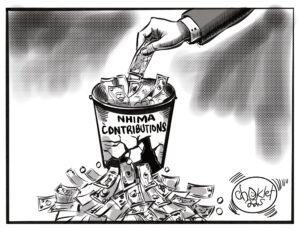A few years ago, I closely followed a story where management decided to transfer the marketing manager (who reported to the Marketing and Sales Director) to another department. The decision was purely strategic but did not seem to go well with the individual involved. The following day, the Company Secretary received an instruction from the Board Chairperson to call for an urgent Board Meeting. Asked about the specific agenda, the Chairperson indicated, ‘Urgent Board Meeting’.
Whenever Board meetings are convened outside procedure and without clear agenda, it causes huge stress to management. It gets worse when the CEO of the organization is not debriefed about the purpose of the meeting but to simply be in attendance. Whenever such happens, especially in quasi-government institutions, the decisions may be terminal, usually the dismissal of the CEO or entire management. This incident was one such meeting that got everyone in management off guard. Making matters worse, management was asked to be on standby while the Board deliberated on whatever the agenda.
After a couple of hours, the CEO was called in, asked why the marketing manager was transferred. His explanation, that it fell within management mandate to make any such decisions was not entertained. He was instructed to reinstate the manager immediately and to ensure this happened, two members of the Board from the Staff Committee made sure the manager moved back to his office before the Board suspended business. It was a one item agenda item and based on an erroneous board mandate.
Simply put from this experience, the Board was intervening in the executive functions of management. Management is referred to as executive management because the responsibilities of the management team start where the responsibilities of the board end, and that is to execute the decisions of the Board. This execution is clearly defined in roles and responsibilities of management as outlined in the CEO job description.
A general description of the CEO responsivities include: ‘Developing’ and implementing the long–term strategy and vision for the organization, reviewing regularly the organisation’s performance against set objectives, ensuring necessary resources are rationalized for optimal performance and shaping the work culture through, for example, team building and leadership. Transferring staff alls squarely in the sphere of managerial responsibilities. The only person answerable to the Board is the CEO.
When a Board inters in areas outside its mandate, it frustrates and confuses management. There is nothing more frustrating to management than having a board that always tiptoes its way into offices, and outside regular board time, looking for answers to questions that were never asked. Micromanaging makes management inefficient. It takes away the core pride of being in executive management because you stop being experts in your areas of competence. I can imagine the nature of the relationship between the CEO and the manager; probably the CEO now consulting him for every management decision to please the Board.
Of all (inefficient) board types I have come across (such passive and certifying boards), the intervening or operating board is the most retrogressive. An intervening board has one common characteristic: Having intense and frequent meetings and getting involved in executive functions of management. In the Zambian case, though slowly receding over time, micromanaging boards take their oversight function to an extreme. They get involved in day-to-day administrative and operational decisions of the organization, including directing which cleaner should be promoted.
In some SOEs, some board chairpersons demand an office and secretary. They must also be provided with a company vehicle (in which case the oversight function on the management of assets is hugely compromised). Even in cases where there is an executive board as I witnessed at the International Monetary Fund, the separation of responsibilities is very distinct. There are executive and operational activities within the organization that the IMF Board will not know until it is part of the reporting by management.
When my colleagues and I assessed one of the reasons there is standing conflict between the board and management, micromanaging stood out as the number one reason. Whenever one office oversteps its responsibilities, there is a fight. No decent management wants to be undermined by directors whose responsibility is to provide oversight and receive regular reports for which decisions should be made. In any case, how do you provide oversight when you are also an active player in the same matters? Its always said, ‘Directors direct; managers manage’.
Before I conclude with reasons why board directors usually drift into micromanage, I should agree that there are circumstances when the board members get to be highly engaged with operational and executive issues. I just took overboard Chairmanship of an international organization and have asked the Chairperson of the Finance Committee (an experienced accountant) to spend time helping the finance department re-arrange the financial reporting system. However, this is limited to special circumstances, such as an organization going through some transition, or serious challenges that require oversight on very regular basis until the organization comes out of a comma. I should emphasize, this is very rare and whenever it happens, it still sends signals of anxiety among the various stakeholders of the organization such as creditors and suppliers.
There is also another case where the board may from time to time engage management to share ideas outside the ambit of the board process. George Barrett, reputed for providing board leadership in the health industry, gave the following useful guidance, ‘I want to know that the CEO would be comfortable with me talking to management if I needed to. I want the CEO to trust me enough to know that I could have a conversation and not do anything that undermines them.
‘But I don’t think board members should just be picking up the phone. They may have the right to do that, but it really can cause mayhem. It’s important to be able to say to the CEO, “I’d love to talk to the marketing person,” and then ideally the CEO is confident enough to say, “I think that’s a great idea.” That kind of openness is really wonderful. It’s not a great sign if the CEO is gun shy about letting his or her people talk to the board.’
The big question is, why do many board members tend to veer into executive functions? The first reason is poor induction. If you pick someone who has been an employee all his or her time to be board director, the mindset is on the executing frequency. Even when such individuals are placed into board committees that bring them nearer to executive decision-making functions, they still want to go an extra mile, to every day be at the office to supervise certain individuals. For them, board directorship is work, full time work for which they should report to the office every day. They feel they should be the ones to execute the board decisions.
The other reason is the nature of the appointment. Micromanagement that takes place in quasi-government organizations happens mainly because of political authority given to some board members. The appointing authorities may have provided directives aimed at sorting out some specific challenges in the organization, ‘There is a lot of laziness among employees; the management team travels too much; and there are members with political interests. Go sort that out.’
It is in the sorting out that there is confusion. Instead of providing a framework and policies to guide the institution towards the attainment of shareholder expectations, some directors get overly excited. They go into those institutions as political appointees with a political mandate and not so much as directors whose responsibility is to provide oversight as per the board charter. I once overheard a newly appointed board chair tell his colleagues, ‘The minister asked me to sort management out and heads will roll’.
Micromanaging happens in private companies as well, mainly because the owners do not want to lose control. These are board members who do not trust their own management that they will safeguard and protect their interests. They have no understanding about the set boundaries and that a board functions best when it keeps its hands off on issues of execution. They direct the usage of funds outside the knowledge of the CEO. The question is: why put an executive management team in place when you know too well you do not believe it can perform?
Chibamba Kanyama is a Fellow of the Institute of Directors- Zambia and Trainer of Trainers on Corporate Governance.

























One Response
Following